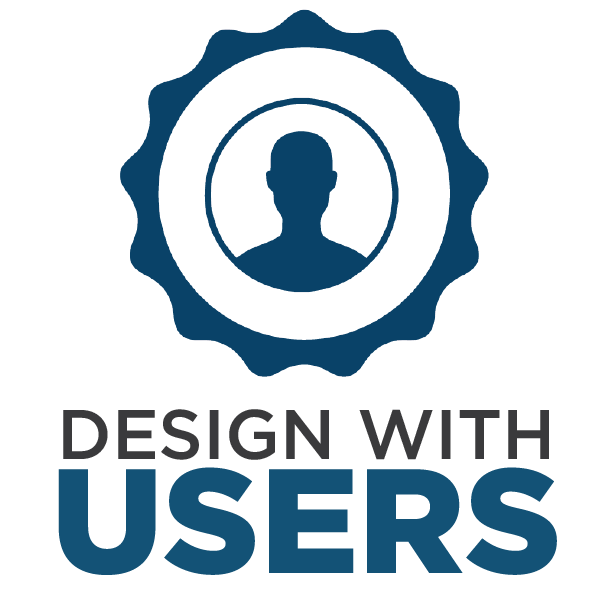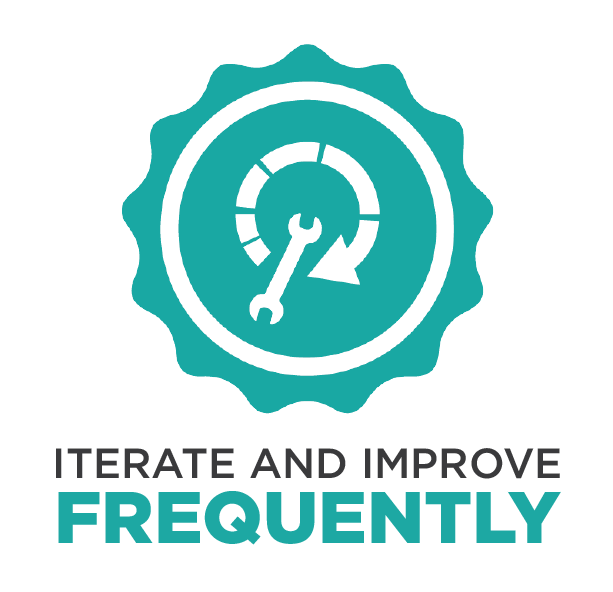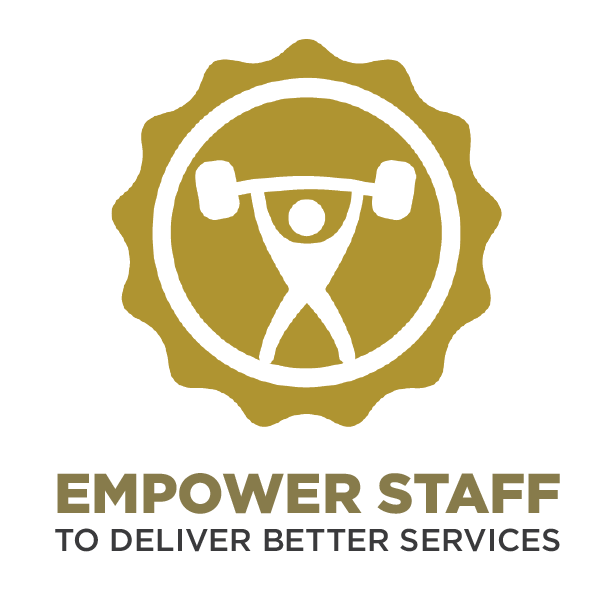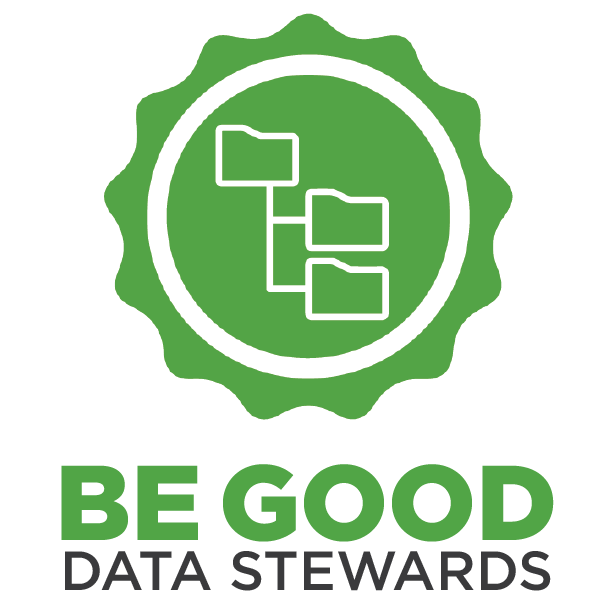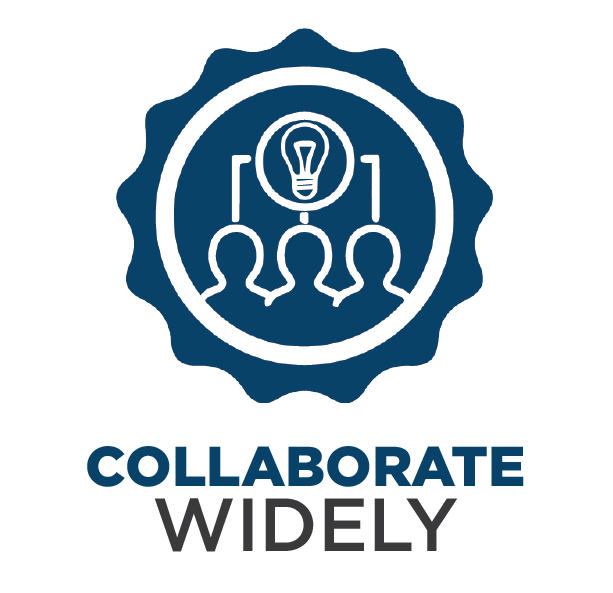| Legend
|
|---|
 Busrides episode Busrides episode
|
 Online self-paced Online self-paced
|
 Video Video
|
 Article Article
|
 Job-aid Job-aid
|
Nurture a digital and growth mindset
Intelligence and learning ability can be developed and improved. Be prepared to unlearn the old and learn the new.
Complete the activities with a star 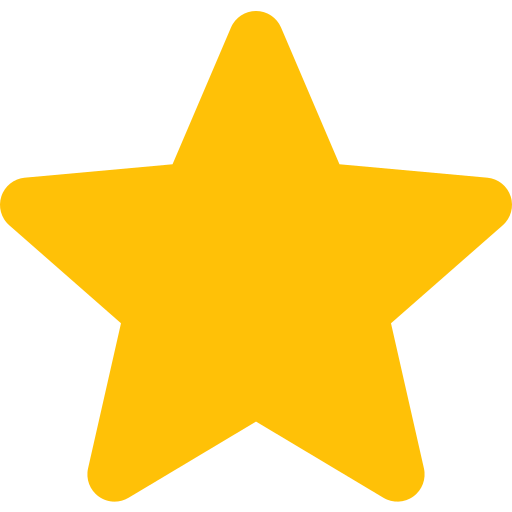 if your digital readiness self-assessment score for this section is 70 or below. If it's above 70, we invite you to browse the list and complete any activity you want. if your digital readiness self-assessment score for this section is 70 or below. If it's above 70, we invite you to browse the list and complete any activity you want.
| | Title |
Format |
Description |
Time
|
|---|
 #GCDigital #GCDigital
|
|
For those of you who have been knee deep in digital for a number of years, the hashtag #GCDigital makes sense. But beyond the hashtag, what does the expression “GCDigital” mean to you?
|
2 minutes
|  Let’s Get Digital Let’s Get Digital |
|
In this episode, we explore how you can take steps to increase your digital literacy—in other words, how you can use digital technology and communication tools as part of your day-to-day work. This could include accessing and managing information and communicating with others. |
2 minutes
|  The GC Digital Standards The GC Digital Standards |
|
Learning to Walk the Digital Talk: The Digital Standards |
3 minutes
| | How to be Digital in the Canadian Public Service |
|
Learn how to apply a digital mindset to your work as a public servant.
TIP: Sign up for a free apolitical account and join a growing international community of public servants. Then log in when accessing Apolitical learning resources to avoid site pop-ups.
|
2.0 hours
| | Achieving Digital Dexterity |
|
This course covers the techniques for achieving digital dexterity in your organization, along with the resulting benefits. You'll explore how to establish a tech-centric mindset and how to digitize practices that support digital dexterity. You'll also learn how to gauge organizational progress toward digital dexterity and what the strategies are for supporting it.
*login to GCcampus required
|
19 minutes
| | Playbook for Gender Equality in the Digital Age |
|
Developed by the Digital Inclusion Lab at Global Affairs Canada, the purpose of the Playbook for Gender Equality in the Digital Age is to put forward a set of best practices to support gender equality in digital contexts. |
10 minutes
| | Developing a Growth Mind-set
|
|
In this course, you'll learn about the characteristics of a growth mindset, such as perseverance, and how to distinguish it from a fixed mindset. You’ll also explore methods of developing mindsets for success, and how professional growth can benefit you and your organization.
*login to GCcampus required
|
20 minutes
| | Best practices for Digital Transformation
|
|
This course presents best practices for managing change in your organization. It shows you how to adapt business operations, and make them more resilient and flexible in the face of change. You’ll also learn about the role of leaders in digital transformation and the best ways to avoid common mistakes.
*login to GCcampus required
|
27 minutes
|
Design with users
Research with users to understand their needs and the problems we want to solve. Conduct ongoing testing with users to guide design and development.
Complete the activities with a star  if your digital readiness self-assessment score for this section is 12 or below. If it's above 12, we invite you to browse the list and complete any activity you want. if your digital readiness self-assessment score for this section is 12 or below. If it's above 12, we invite you to browse the list and complete any activity you want.
| | Title |
Format |
Description |
Time
|
|---|
 Listening can be just the opposite of what we might think Listening can be just the opposite of what we might think
|
|
4 techniques to become a better listener to create a better world
|
8 minutes
|  Let’s talk about AccessAbility Let’s talk about AccessAbility
|
|
Digital technologies are an increasingly important resource in many aspects of life: education, employment, government, commerce, health care, recreation, and more. It is essential that these be accessible in order to provide equal access and equal opportunity to people with diverse abilities.
|
7 minutes
| | Exploring customer journey mapping
|
|
In this course, you'll learn how to create a customer journey map. This problem-solving tool can help you brainstorm effective solutions for key customer pain points. You'll also explore how to recognize and prioritize actions that improve your customer focus, and how to avoid common mapping mistakes.
*login to GCcampus required
|
23 minutes
| | Design with users #designwin
|
|
In this episode, we’ve selected 3 great videos dealing with the basic principles of user-centred design for you to watch.
|
4 minutes
| | Gender-based Analysis Plus (GBA+) Step-by-step
|
|
Learn the key concepts of GBA+ and recognize how various identity factors can influence the experience of federal government initiatives. Access a job aid to help you demystify and apply GBA+ to your work.
|
7 minutes
| | GBA+ Intersectionality job aid
|
|
This tool can help you reflect on peoples’ multiple identity factors, and how that may impact their experiences with government initiatives. Given that our work may differ as public servants, this job aid may be adapted and changed to meet your organizational and contextual needs.
|
10 minutes
| | Overcoming Unconscious Bias in the Workplace
|
|
Ensuring a diverse workplace requires seeing past not just individual biases, but also institutional biases that can become ingrained in teams and organizations. In this course, you'll learn about the process of overcoming organizational biases and how to function as an inclusive leader. You'll also learn specific tactics for combating unconscious biases in the workplace.
*login to GCcampus required
|
30 minutes
|
Iterate and improve frequently
Research with users to understand their needs and the problems we want to solve. Conduct ongoing testing with users to guide design and development.
Complete the activities with a star  if your digital readiness self-assessment score for this section is 12 or below. If it's above 12, we invite you to browse the list and complete any activity you want. if your digital readiness self-assessment score for this section is 12 or below. If it's above 12, we invite you to browse the list and complete any activity you want.
| | Title |
Format |
Description |
Time
|
|---|
 Agile. Step by Step Agile. Step by Step
|
|
What could be better than putting users at the centre of our efforts to improve our jobs and service offerings? How about doing all that while being agile? Sounds great, right? But hmm… what does “agile” mean?
|
9 minutes
| | The Agile Leader
|
|
In this course, you will learn how to adopt a focused and flexible mindset; respond quickly with adaptive techniques; and empower others to reach the goal.
*login to GCcampus required
|
43 minutes
| | Developing and Supporting an Agile Mindset
|
|
This course explains why it's important for organizations to cultivate a culture of agility. You'll explore the characteristics that distinguish an agile mindset from a fixed mindset. You'll learn how to encourage and build an agile enterprise, and how doing this will help your business flourish. The course also covers how developing and supporting an agile mindset can benefit both your corporate culture and your business success.
*login to GCcampus required
|
26 minutes
| | Agile stakeholder engagement and team development
|
|
In this course you'll learn about Agile teams and team leadership, including the characteristics of an effective Agile team. The course introduces you to common team development strategies and developmental mastery models. It also covers effective communication tools and the benefits of using facilitation techniques like Agile games to foster collaboration and cooperation.
*login to GCcampus required
|
53 minutes
| | Building a culture of design thinking
|
|
This course presents ways to develop customer focus so that you can define problems. You'll explore design thinking strategies that will show you how to reframe problems, how to brainstorm solutions and when to use prototypes. You'll also identify best practices for user testing, and ways of gathering and reviewing feedback that will help you solve problems effectively.
*login to GCcampus required
|
22 minutes
|
Empower staff to deliver better services
Research with users to understand their needs and the problems we want to solve. Conduct ongoing testing with users to guide design and development.
Complete the activities with a star  if your digital readiness self-assessment score for this section is 12 or below. If it's above 12, we invite you to browse the list and complete any activity you want. if your digital readiness self-assessment score for this section is 12 or below. If it's above 12, we invite you to browse the list and complete any activity you want.
| | Title |
Format |
Description |
Time
|
|---|
 The ‘people side’ of digital transformation The ‘people side’ of digital transformation
|
|
The pandemic has opened the digital floodgates. It’s no wonder staying afloat can feel difficult.
TIP: Sign up for a free apolitical account and join a growing international community of public servants. Then log in when accessing Apolitical learning resources to avoid site pop-ups.
|
6 minutes
| | Polishing Your Feedback Skills
|
|
This course covers when and how to give feedback positively, how to handle bad reactions and your own nervousness, and how to give feedback to people at different organizational levels.
*login to GCcampus required
|
30 minutes
| | FWDThinking Series Episode 2: Empowering Product Teams
|
|
Find out more about empowering public sector product managers.
|
8 minutes
| | Experience, empowerment, and empathy — 3 data skills for local government
|
|
Don’t be afraid to pitch an idea — and encourage it when your colleagues do the same.
TIP: Sign up for a free apolitical account and join a growing international community of public servants. Then log in when accessing Apolitical learning resources to avoid site pop-ups.
|
7 minutes
|
Be good data stewards
Research with users to understand their needs and the problems we want to solve. Conduct ongoing testing with users to guide design and development.
Complete the activities with a star  if your digital readiness self-assessment score for this section is 12 or below. If it's above 12, we invite you to browse the list and complete any activity you want. if your digital readiness self-assessment score for this section is 12 or below. If it's above 12, we invite you to browse the list and complete any activity you want.
| | Title |
Format |
Description |
Time
|
|---|
 What is data? What is data?
|
|
In the Government of Canada, lack of data isn’t a problem. In fact, it’s the opposite: there’s often too much information available from too many different sources to make a clear decision. In this episode, you'll learn:
- the definition of data and data analysis;
- the 2 types of data;
- the 2 ways data is organized;
- 5 steps to analyze data to answer a business question; and
- the role of a Chief Data Officer.
|
24 minutes
| | A self-directed guide to understanding data
|
|
This course is a series of self-paced activities designed to introduce learners to data in the Government of Canada. It sets the foundation for the Discover Data series by introducing data concepts and terminology, exploring changing citizen expectations of government, what a data-driven organization looks like and how the Government of Canada is moving towards that goal. It will also give learners an opportunity to reflect on personal data challenges, and their own organizational data strategy.
|
2.5 hours
| | Making data-driven decisions
|
|
In this course, you'll learn about the benefits of making decisions with data as the basis for your choice. You'll explore best practices for taking a balanced approach to make decisions that don't rely on a single perspective. You'll also learn how to avoid common mistakes associated with using data to inform decisions.
*login to GCcampus required
|
28 minutes
| | Exploring data visualization
|
|
This course sets out the considerations for creating data visualizations and explains how to present your message with the help of data visualization tools. You'll learn how to communicate clearly with data visualizing techniques. You'll also explore ways to use best practices for design so that your visualizations clearly and accurately tell the story you want them to.
*login to GCcampus required
|
30 minutes
|
Collaborate widely
Research with users to understand their needs and the problems we want to solve. Conduct ongoing testing with users to guide design and development.
Complete the activities with a star  if your digital readiness self-assessment score for this section is 12 or below. If it's above 12, we invite you to browse the list and complete any activity you want. if your digital readiness self-assessment score for this section is 12 or below. If it's above 12, we invite you to browse the list and complete any activity you want.
| | Title |
Format |
Description |
Time
|
|---|
 Alex Benay: on a Digital Public Service Alex Benay: on a Digital Public Service
|
|
Open by default or open government is about reducing the barriers to access to government.
|
1 minute
|  Government of Canada’s Open by Default pilot Government of Canada’s Open by Default pilot
|
|
Right now we’re testing an Open by Default pilot that gives the public a behind-the-scenes look at the federal government’s work as its being created.
|
1 minute
|  Communication Communication
|
|
How collaboration hubs can support your remote team.
|
2 minutes
| | Encouraging Team Communication and Collaboration
|
|
In this course, you'll learn techniques for encouraging effective communication and overcoming communication problems. You'll also learn strategies for encouraging teamwork. Finally, you'll learn about common tools and technologies for virtual team communication and key considerations for establishing virtual communication guidelines.
*login to GCcampus required
|
30 minutes
| | Cultivating Cross-functional Team Collaboration
|
|
This course shows you how to establish and cultivate true cross-functional team collaboration. It explains the characteristics of this approach and the resulting benefits. You’ll learn how to use software solutions that will help you assess your team’s cross-functional collaboration readiness. You’ll also explore how to overcome barriers and achieve true cross-functional collaboration throughout your organization.
*login to GCcampus required
|
20 minutes
| | Cultivating Relationships with Your Peers
|
|
This course explores how you can identify the peers in your organization who are especially important to meeting your goals. It will help you develop and maintain solid, mutually beneficial relationships with the people who matter most to you.
*login to GCcampus required
|
30 minutes
| | Open Government Starts with You
|
|
The Open Government Partnership aims to promote transparency, empower citizens, fight corruption and harness new technologies to strengthen governance. As a member of this initiative, the Government of Canada continues to deepen its efforts to integrate openness into day-to-day business. Open government practitioners discuss the opportunities available to help make open government mainstream across Canada. You will learn how to facilitate this shift towards openness within your own organization.
*login to GCcampus required
|
1.5 hours
| | The Conversation Starts Here
|
|
Opportunities for reconciliation with the Indigenous Peoples of Canada are everywhere. Reconciliation means learning about the Indigenous experience and working towards true inclusivity as a nation. The key is open dialogue and engagement. The conversation starts here.
*login to GCcampus required
|
1.5 minutes
| | Collaboration: From ‘buzz-word’ to reality
|
|
Collaboration can be transformative, but it is often just paid lip service
TIP: Sign up for a free apolitical account and join a growing international community of public servants. Then log in when accessing Apolitical learning resources to avoid site pop-ups.
|
7 minutes
|
|

